Thursday, June 18, 2015WRM#15-22
The WRMarketplace is created exclusively for AALU Members by the AALU staff and Greenberg Traurig, one of the nation’s leading tax and wealth management law firms. The WRMarketplace provides deep insight into trends and events impacting the use of life insurance products, including key take-aways, for AALU members, clients and advisors.
TOPIC: The Changing Tax Paradigm – The Basics of Basis and the New Need for Life Insurance.
MARKET TREND: The convergence of higher income tax rates and lower transfer tax rates creates a larger role for basis management and life insurance in the estate planning process.
SYNOPSIS: Estate planning can no longer solely focus on transfer taxes. Advisors also must consider the impact of federal and state income and capital gains taxes and the federal net investment income tax. Overall, long-term capital gains rates can reach 37.1% or more while the rates for short-term capital gains can reach 56.7%, which could influence the decision about whether to use estate tax inclusion or lifetime gifts in some circumstances.
TAKE AWAY: Higher overall income and capital gains tax rates, together with the net investment income tax, have shifted the estate planning focus. When assessing whether to make lifetime gifts or retain the assets and seek a basis step-up at death, advisors must consider competing income tax factors, such as: (i) asset basis, (ii) current appreciation, (iii) growth potential, and (iv) taxes assessed by the state in which the client resides or in which an asset is located.
The wealth of many clients consists primarily of appreciated assets, like real property, stocks, bonds, collectibles,1 or other capital assets. In the past, traditional estate planning focused little on income tax issues related to the gain in value of these assets, since the comparatively higher federal and state estate, gift, and generation-skipping transfer taxes (collectively “transfer taxes”) kept clients focused on using lifetime gifts to shift appreciating assets to younger generations. However, the increase in various state and federal income tax rates (including the new federal net investment income tax (“NIIT”)),2 combined with the reduction in transfer tax rates and increase in transfer tax exemptions, has shifted the estate planning paradigm. Now, advisors must also consider ways to manage asset basis and address the income and capital gains tax regime as part of the estate planning process.
WHAT IS BASIS AND WHY IS IT IMPORTANT
Federal and most state governments impose a tax on the sale of an asset if it has increased in value or allow a deduction if the sale results in a loss. “Basis” is the figure that is used to determine whether the sale results in a gain or loss.
The basis of an asset is generally the amount a person pays for the asset (including certain acquisition costs such as settlement costs, closing fees, and brokerage commissions). The appreciation in value above basis is capital gain. A decrease in value below basis is a capital loss. Until the asset is sold, the gain or loss is “unrealized.” Once the asset is sold, capital gain or loss is “realized,” and any gain is commonly subject to tax.
Example. Assume client X purchases land for $1 million (including settlement costs and closing fees). X’s basis in the land is $1 million. Six years later, X sells the land to an unrelated party for $1.4 million. X’s realized capital gain from the sale is $400,000 (the sales price of $1.4 million less X’s $1 million basis). If instead X had sold the land for $900,000, X would have a realized capital loss of $100,000 (the sales price of $900,000 less X’s $1 million basis).
TAXATION OF CAPITAL GAINS AND LOSSES
Increases in federal and state income tax rates have changed the estate planning process. An asset’s basis is critical to determining the amount of capital gain that is realized when an asset is sold. The tax rate charged on realized capital gain is based on (i) the period of time the taxpayer held the asset and (ii) the taxpayer’s ordinary income tax bracket.3
Short-Term Capital Gain. If the asset is held for one year or less, then the gain is short-term capital gain (“STCG”). For federal income tax purposes, STCG is taxed as ordinary income at graduated tax rates.
Long-Term Capital Gain. If an asset is held for more than one year before it is sold, the gain on disposition will be a long-term capital gain (“LTCG”). The rate imposed on LTCG is based on the individual taxpayer’s ordinary income tax bracket. LTCG is generally taxed at a 15% rate for taxpayers in ordinary income tax brackets of 25%- 35%. However, to the extent a taxpayer’s taxable income (including capital gain) exceeds the threshold set for the 39.6% income tax bracket ($413,200 for single taxpayers, $464,850 for married taxpayers filing jointly, or $12,300 for estates and trusts) the taxpayer’s maximum LTCG tax rate will be20%.
Example: Client X, a single person, has ordinary income of $350,000 and LTCG of $100,000. Because X’s income, combined with his capital gains, exceeds the threshold for application of the 39.6% income tax bracket, $63,200 ($413,200 less $350,000) of the LTCG will be taxed at 15% and $36,800 will be taxed at 20%.
For taxpayers who fall within the 10% or 15% federal income tax brackets, the federal LTCG tax rate is 0%. The table below summarizes the general capital gains tax rate structure.
| Income Tax Bracket | STCG Tax Rate | Top LTCG Tax Rate |
| 10% or 15% | Ordinary Income Rate | 0% |
| 25%, 28%, 33%, or 35% | Ordinary Income Rate | 15% |
| 39.6% | Ordinary Income Rate | 20% |
The capital gains tax rules are complicated, with many exceptions to this general structure. Collectibles and certain qualified small business stock, for example, are taxed at a maximum 28% LTCG tax rate, and certain depreciable real property subject to recapture is taxed at a maximum 25% LTCG tax rate.
Capital Losses. When an asset is sold for less than its basis, the taxpayer will have either a short-term or long-term capital loss on the sale. Characterization of a loss as short-term or long-term also depends on the length of time the taxpayer held the asset, with the loss characterized as long-term if held for more than a year. Each year, STCGs and losses are matched, as are LTCGs and losses. If the result is a net LTCG and a net STCG, the net gains are taxed at the applicable long and short-term rates. If the result is a net loss, up to $3,000 of the loss can generally be deducted from ordinary income and the remaining capital loss is carried forward to be deducted in future years.
NIIT. Capital gain will also be subject to the NIIT of 3.8% if the taxpayer’s income exceeds the NIIT threshold amounts (in 2015, $250,000 for married taxpayers filing jointly, $200,000 for single taxpayers and $12,300 of undistributed income for estates and trusts). Taking NIIT into consideration, the effective federal LTCG tax rate can reach 23.8% for high income taxpayers.
Don’t Forget State Capital Gains Taxes. State capital gains taxes also can play a significant role. State tax rates for individuals range from no state capital gains tax in states like Texas, Florida and Nevada, to 13.3% in California.
Actual rates applied to gain at the state level will depend upon the taxpayer’s residence and/or the state in which the asset is located.
When federal capital gain tax rates and NIIT are combined with state rates, the effective LTCG tax rates can reach 37.1% or more and the effective STCG tax rates can reach 56.7%. These tax rates are close to and may sometimes exceed the 40% federal estate tax rate, influencing the choice between estate tax inclusion and lifetime gifts in some circumstances.
BASIS RULES FOR GIFTS & ESTATES
A key to analyzing the impact of capital gains taxes on estate planning is accurately determining the basis of a specific asset and understanding the differences between the complex rules that apply to lifetime gifts versus assets that are included in a decedent’s estate at death.
Property Received by Lifetime Gift. When property is transferred by gift, the donee’s basis in the asset generally is equal to the donor’s basis (so-called “carry-over basis”).4 Attached as Appendix A is a list of additional rules that expand and limit the application of this basic rule regarding carry-over basis for gifts.
Property Acquired From a Decedent. Property acquired from a decedent generally receives a stepped-up basis to fair market value as of either the decedent’s date of death or six months after death if an election is made to use the alternate valuation date for federal estate tax purposes.5 Property acquired from a decedent generally means property that is included in the decedent’s gross estate for estate tax purposes and includes property acquired by the recipient by bequest, inheritance, or survivorship (such as property held as joint tenants with right of survivorship or as tenants by the entirety) and property over which the decedent holds a general power of appointment. Attached as Appendix Bis a list of additional rules that impact the application of the basic rule concerning basis of property acquired from a decedent.
Note that, with regard to basis adjustments at death, the IRS just issued Rev. Proc. 2015-37, stating that it will no longer issue rulings on whether the assets in a grantor trust receive an IRC §1014 basis adjustment (i.e., basis step- up) at the grantor’s death for income tax purposes if those assets are not included in the grantor’s gross estate for estate tax purposes. Apparently, some may have argued that the grantor trust assets could receive a stepped-up basis despite non-inclusion in the estate, an argument the IRS appeared to reject in CCA 200937028. Otherwise, the IRS has not ruled on this issue and now has simply added this item to the formal list of issues on which it will not provide private letter rulings or determination letters until it releases further guidance (e.g., revenue ruling, revenue procedure, etc.).
Property Acquired From a Spouse. When property is transferred between spouses during life, the basis in the hands of the donor-spouse carries over to the done-spouse, even if the transfer is made pursuant to a sale. This rule also applies if the transfer is incident to a divorce.6
PLANNING FOR BASIS
Advisors now must consider a variety of implications when making their planning recommendations. Factors to be examined will include: (i) asset basis, (ii) appreciation, (iii) growth potential, (iv) the application of state taxes depending on where the client resides or where an asset is located, and (v) the client’s life expectancy. The interplay of these and other factors will impact the decision to use a particular asset to make lifetime gifts or include the asset in the client’s estate to achieve a basis step-up.
| Type of Asset | Make a Lifetime Gift | Hold for Estate Inclusion |
| Asset with Low Basis and High Appreciation and/or Growth Potential | Depends. For example, a gift may provide benefit if:
Will implement additional planning with life insurance or a vehicle that provides tax planning, such as an installment sale to a grantor trust or a charitable remainder trust Donee is in a low income tax bracket Donee lives in a state with low or no income tax Client lives in a state with no gift tax but a high estate tax rate and/or low estate tax exemption |
Yes.
Can obtain a basis step-up at death, particularly if client has not used his/her estate tax exemption For assets in long-term trusts, grantor can use substitution power to swap out low basis assets before death (for grantor trusts), and beneficiaries can be given general powers of appointment to obtain periodic basis adjustments (see discussion below) Life insurance held in a properly structured irrevocable trust can be used to offset additional estate taxes on the appreciation |
| Asset with High Basis and Low Appreciation | Yes. Assets that have little or no unrealized capital gain may be better candidates for lifetime gifts | No, absent other factors such as high potential for growth |
| Anticipated Sale During Client’s Life of Highly Appreciated Asset with Low Basis | Yes, provided there is additional planning with a life insurance trust or a vehicle to transfer assets such as an installment sale to a grantor trust or a charitable remainder trust | Not applicable. |
The Importance of Life Insurance. Life insurance can play a significant role in this new estate planning environment. A properly structured irrevocable life insurance trust (“ILIT”) provides a source of funds for payment of estate taxes (either by making loans to or purchasing assets from the client’s estate), which can allow highly appreciated assets to be included in the client’s estate to obtain a basis step-up on the client’s death. Life insurance also can supplement lifetime estate planning techniques, such as installment sales to grantor trusts, where the proceeds can be used to offset funds that can be consumed by income taxes, capital gains taxes and NIIT following the grantor’s death (since the grantor no longer pays the trust’s income tax liability), and charitable remainder trusts, where the proceeds can provide an alternate source of funds for the client’s family as the charitable trust remainder passes to the charity.
Use of Grantor Trusts. An installment sale to a grantor trust can be a valuable estate planning tool even if the asset has a low basis and large unrealized capital gains because the grantor trust allows the assets to grow within the trust (taxes on the trust’s income and gains are paid by the grantor rather than the trust). If the trust’s assets are sold to a third party, the grantor will pay the applicable taxes, thereby reducing the grantor’s estate rather than reducing the value of the trust. Grantor trusts also provide additional flexibility, allowing the grantor to purchase low basis assets from the trust for cash or high basis assets, or substitute high basis assets for low basis assets, before the grantor’s death. Once the low basis assets are back in the grantor’s estate, the assets will receive a stepped-up basis at his or her death. Life insurance acquired through the grantor trust also can provide a source of funds for the payment of capital gains taxes and NIIT if the grantor is unable to reacquire the assets.
Charitable Remainder Trusts. For clients who anticipate selling a large, highly appreciated asset and are charitably inclined, an inter vivos charitable remainder trust may be a flexible option to transfer wealth.7Charitable remainder trusts allow the deferral of both capital gains tax and NIIT on the sale of assets within the trust, along with income tax deferred growth on the proceeds. However, annuity or unitrust distributions to the non-charitable beneficiary are not exempt, and, to the extent such distributions carry out income and gains, the income will be included in the beneficiary’s income for NIIT and capital gains purposes. Life insurance held in an ILIT for the benefit of the client’s family can be used to replace assets that pass to charity at the end of the charitable term.
Granting General Powers of Appointment. Long-term trusts created for the client’s family have the potential to accumulate substantial unrealized capital gain over time. Such trusts typically are structured to maximize benefits to successive generations (that is, the assets are not included in the beneficiaries’ estates at death). If the trust also holds a family business, a family compound, or other assets intended to be held long-term, significant gain can build up in the trust through the years. For tax planning purposes, and to obtain a partial basis adjustment when a beneficiary dies, such trusts can be structured to give a third party (such as a trust protector or independent trustee) the power to confer a general power of appointment on the beneficiary (causing part of the assets to be included in the beneficiary’s estate in order to obtain a stepped-up basis for such assets), or the trust can include formula language granting each beneficiary a general power of appointment under specified circumstances. Depending on the size of the beneficiary’s estate and their remaining transfer tax exemptions, general powers of appointment that are limited to a beneficiary’s unused estate and generation-skipping transfer tax exemptions can provide partial basis adjustment at the beneficiary’s death without triggering federal estate or generation-skipping transfer taxes. If properly structured, long-term trusts also can acquire life insurance on the beneficiaries, which can be used to replace funds depleted by capital gains and NIIT taxes.
TAKE AWAYS
- Higher overall income and capital gains tax rates, together with the NIIT, have shifted the estate planning focus.
- When assessing whether to make lifetime gifts or retain the assets and seek a basis step-up at death, advisors must consider the overall tax environment, such as: (i) asset basis,(ii) appreciation, (iii) growth potential, and (iv) taxes assessed by the state in which the client resides or in which an asset is located.
Appendix A
| Principal Rules Regarding Basis of Property Received by Lifetime Gift | |
| Basic Rule |
|
| Donor Received Property by Gift |
|
| Adjustment for Gift Taxes Paid |
|
| Fair Market Value Less than Basis at Time of Gift |
|
| Part Sale and Part Gift |
|
| Holding Period for Long-Term Capital Gain |
|
Appendix B
| Principal Rules Regarding Basis of Property Acquired From a Decedent | |
| Basic Rule | Property acquired from a decedent generally receives a stepped-up basis to fair market value as of either the decedent’s date of death or six months after death if an election is made to use the alternate valuation date for federal estate tax purposes (the “applicable valuation date”). |
| Fair Market Value Less than Lifetime Basis at Death | Property acquired from a decedent will receive a step-down in basis for both gain and loss purposes if the fair market value of the property as of the applicable valuation date is less than the decedent’s basis.12 |
| Property in Marital Deduction Trust | Property that passes from a deceased spouse to a marital deduction trust receives a basis step-up on the deceased spouse’s death, and any property remaining in the trust on the survivor’s death will be stepped-up again.13 |
| Decedent Received Gift From Beneficiary Within 1 Year of Death | If the decedent acquired property by gift from the beneficiary (or the beneficiary’s spouse) within one-year of the decedent’s death, the property will not receive a stepped-up basis on the decedent’s death.14 |
| Partial Interest in Asset | If only part of an asset is included in the decedent’s gross estate, then just that portion of the asset will receive a stepped-up basis. |
| Income in Respect of a Decedent | Items that are “income in respect of a decedent” (so-called “IRD”), such as individual retirement accounts and 401k plan accounts, do not receive a stepped-up basis on the owner’s death.15 |
| Property Held in Joint Tenancy or as Tenants by the Entirety | If an asset is held in joint tenancy with right of survivorship or as tenants by the entirety by unmarried parties, the basis of the asset in the hands of the survivor will depend upon the contributions made by each party – only the portion of the asset attributable to contributions made by the decedent will receive a stepped-up basis.16 However, if the parties are married then only one-half of the couple’s interest in the property is included in the deceased spouse’s estate and receives a stepped-up basis (regardless of each spouse’s contributions) – unless the asset is community property.17 |
| Community Property | If an asset owned by a married couple is community property, both the deceased spouse’s and the surviving spouse’s half of the community property asset receive a stepped-up basis. This so-called “double step-up” is unique to community property ownership and can offer significant benefits, particularly for low basis assets.18 |
| Holding Period for Long-Term Gain | For purposes of determining whether capital gain is long-term or short-term, the holding period of property acquired from a decedent is automatically deemed to have been held by the beneficiary for more than a year even if it is sold within a year of the decedent’s death.19 |
NOTES
TCO 361352637v3
1 “Collectibles” includes artwork, antiques, metals (such as gold, silver, and platinum bullion), gemstones, stamps, coins, and alcoholic beverages held more than 1 year.
2 Technically titled the “Unearned Income Medicare Contribution Tax,” the NIIT was approved by Congress as part of the Health
Care and Education Reconciliation Act of 2010 and became effective January 1, 2013.
3 IRC § 1222.
4 IRC § 1015(a).
5 IRC § 1014(a).
6 IRC § 1041.
7 A charitable remainder trust is a special type of trust that pays an annuity or unitrust payment to a non-charitable beneficiary (usually the donor and/or his spouse) for a given period of time (typically for the beneficiary’s lifetime), with the remaining assets passing to charity on the death of the beneficiary.
8 IRC § 1015(d).
9 IRC § 1015(a). Example: Client X purchased 100 shares of ABC company stock for $10 per share (total purchase price of
$1,000). X gave all of the shares to his son, Z, when the shares were valued at $9 per share. Z later sold the shares to a third party for $7 per share. Z’s basis for determining his capital loss is $9 per share. If instead, Z had sold the shares at $12 per share, Z’s basis for purposes of determining capital gain is $10 (the basis carried over from X at the time of the gift).
10 Treas. Regs. § 1.1015-4(a). Example: Client X purchased a plot of land for $100,000. X sold the land to W for $90,000 at a time when the fair market value of the property is $125,000. X pays no gift tax on the transaction. W’s basis in the land is $100,000.
11 IRC § 1223(2).
12 Example: Client A left her home to her daughter, B, when she died. A’s basis in the home before death was $500,000. The fair market value of the home on A’s death is $400,000. B’s basis in the home is $400,000, and if she sells the home for $450,000 she will have $50,000 in capital gain.
13 IRC § 1014(b)(10).
14 IRC § 1014(e).
15 IRC § 1014(c).
16 IRC § 1014(b)(9).
17 See, IRS Publication 559 (2014), page 14. Example: A and B (who are not married to each other), purchase a home for $500,000, which they hold as joint tenants with right of survivorship. A contributed $75,000 to the purchase price, and B contributed $25,000 to the purchase price. A predeceases B. Upon A’s death, the fair market value of the home is $600,000. 75% of the fair market value of the property is included in A’s estate. B’s new basis in the property is $500,000 (B’s basis of $50,000 plus $450,000 attributed to A’s interest in the property). Alternate Example: Same facts as above, but assume A and B are married. Only one-half of the property is included in A’s estate even though A contributed 75% of the purchase cost. B’s new basis in the property is $550,000 ($250,000 (one-half of the original basis) plus $300,000 (one-half of the fair market value of the home on A’s death that is included in A’s estate for estate tax purposes)).
18 IRC § 1014(b)(6). Example: Same facts as the example in Note 17 except that the home is community property. Upon A’s death, the basis for the entire property is stepped-up, and B’s new basis in the property is $600,000.
19 IRC § 1223(9).
DISCLAIMER
This information is intended solely for information and education and is not intended for use as legal or tax advice. Reference herein to any specific tax or other planning strategy, process, product or service does not constitute promotion, endorsement or recommendation by AALU. Persons should consult with their own legal or tax advisors for specific legal or tax advice.
The AALU WRNewswire and WRMarketplace are published by the Association for Advanced Life Underwriting® as part of the Essential Wisdom Series, the trusted source of actionable technical and marketplace knowledge for AALU members—the nation’s most advanced life insurance professionals.
WRM #15-22 was written by Greenberg Traurig, LLP
Jonathan M. Forster
Martin Kalb
Richard A. Sirus
Steven B. Lapidus
Rebecca Manicone
Counsel Emeritus
Gerald H. Sherman 1932-2012
Stuart Lewis 1945-2012






